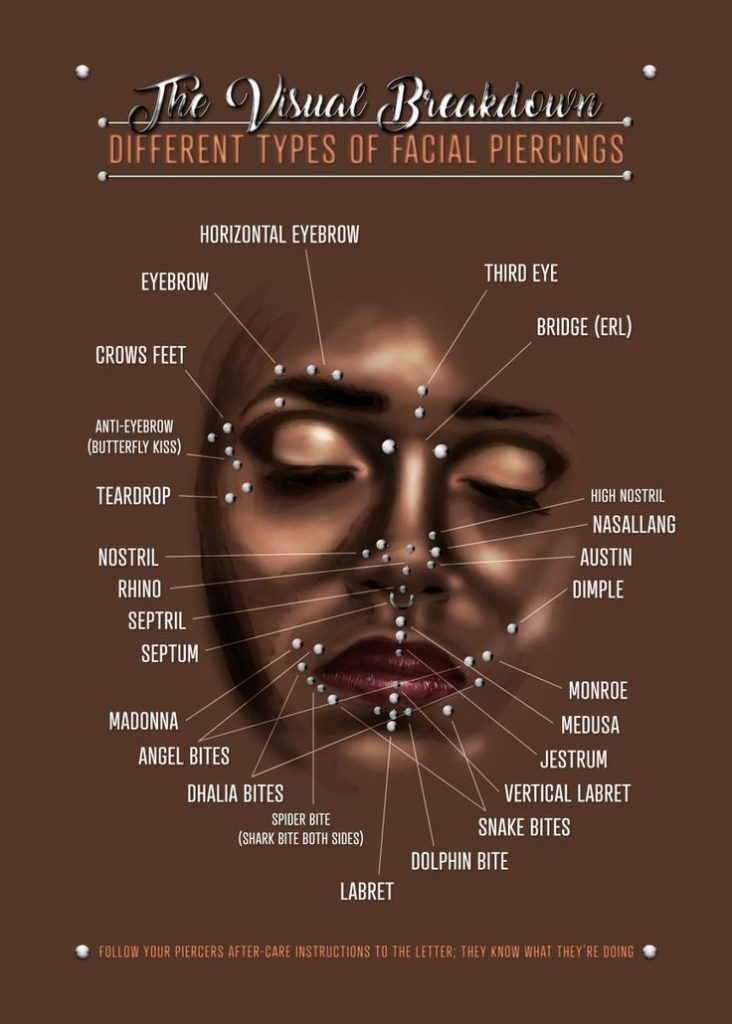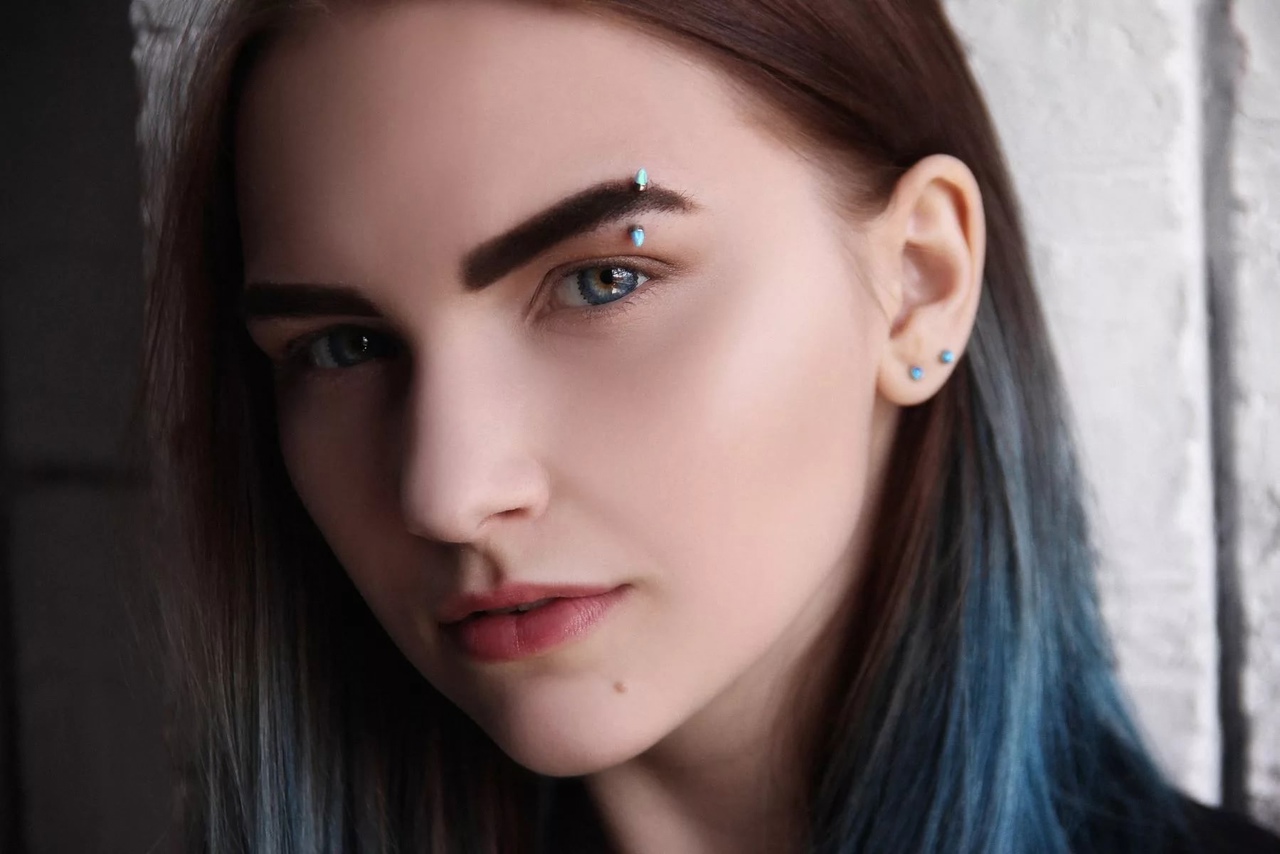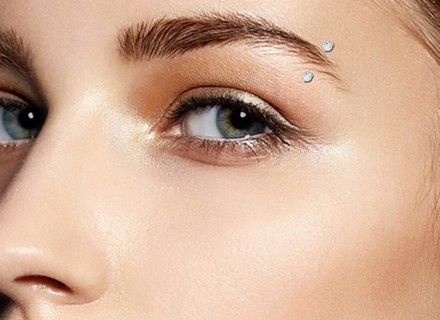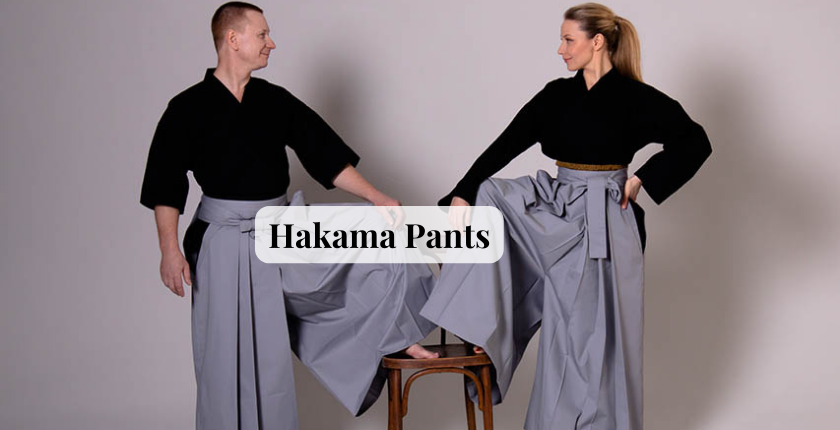Table of Contents
Welcome to our comprehensive guide on eyebrow piercing! In this article, we’ll delve into everything you need to know about this popular form of body modification. Whether you’re considering getting your eyebrow pierced or simply curious about the process, you’ve come to the right place.
Eyebrow piercing has become a trendy way to express individuality and enhance one’s appearance. However, it’s essential to understand the ins and outs of eyebrow piercing to ensure a safe and successful experience.
Throughout this guide, we’ll cover the various types of eyebrow piercings, the piercing process itself, expert tips for aftercare, and much more. By the end of this article, you’ll have all the knowledge you need to make informed decisions about eyebrow piercing and ensure proper care for your new piercing.
So, whether you’re a piercing enthusiast or a newcomer to the world of body modification, sit back, relax, and let’s explore the fascinating world of eyebrow piercing together!
What is Eyebrow Piercing?

Eyebrow piercing involves the insertion of jewelry through the skin and tissue of the eyebrow area. It is a form of body modification that has gained popularity for its aesthetic appeal and self-expression. Most of the Celebrities do Eyebrow piercing rather than others.
History:
Eyebrow piercing has a rich history that dates back centuries. Historically, various cultures have practiced forms of body piercing for ritual, spiritual, or decorative purposes. For example:
- In ancient cultures such as the Aztecs and Mayans, eyebrow piercings were often worn as symbols of status or bravery.
- Among indigenous tribes in different parts of the world, eyebrow piercings held cultural significance and were sometimes used in rites of passage ceremonies.
Cultural Significance:
Eyebrow piercing has evolved and holds different meanings in various cultures and subcultures:
- In contemporary Western culture, eyebrow piercing is commonly viewed as a form of self-expression and fashion statement.
- It is often associated with alternative lifestyles, such as punk, goth, or alternative music scenes.
- Eyebrow piercings may also hold personal significance for individuals, representing traits such as individuality, rebellion, or confidence.
Examples:
- One famous example of eyebrow piercing in popular culture is musician Dave Navarro, known for his distinctive eyebrow ring.
- Eyebrow piercing has also been featured in fashion magazines, music videos, and films, contributing to its mainstream visibility and acceptance.
Informative Table:
| Culture/Region | Significance of Eyebrow Piercing |
|---|---|
| Ancient Aztecs and Mayans | Symbol of status and bravery |
| Indigenous tribes | Cultural tradition and rites of passage |
| Contemporary Western culture | Fashion statement and self-expression |
Types of Eyebrow Piercings
Eyebrow piercings come in various styles, each offering a unique look and placement. Here are some common types of eyebrow piercings:
| Type | Description |
|---|---|
| Vertical Eyebrow | This piercing is vertically oriented, going through the eyebrow from top to bottom. |
| Horizontal Eyebrow | As the name suggests, this piercing runs horizontally through the eyebrow. |
| Anti-Eyebrow | Placed below the eyebrow, above the cheekbone, creating an “anti” or inverse effect. |
| Bridge Piercing | Also known as an “Erl,” this piercing goes horizontally across the bridge of the nose. |
| T-shaped Eyebrow | Combining vertical and horizontal elements, resembling the letter “T” when viewed head-on. |
These are just a few examples of eyebrow piercings, but there are many more variations and creative placements to explore. Visual aids such as images or diagrams can clarify each type and help individuals choose the style that best suits their preferences and facial anatomy.

Factors to Consider Before Getting Eyebrow Pierced
Before getting an eyebrow piercing, it’s important to consider several factors to ensure a safe and successful experience. Below are some tips and considerations to keep in mind:
- Research: Take the time to research reputable piercing studios in your area. Look for establishments with experienced piercers, proper sterilization procedures, and positive reviews from previous clients.
- Consultation: Schedule a consultation with the piercer to discuss your preferences, concerns, and any medical conditions that may affect the piercing process. Use this opportunity to ask questions and address any doubts or uncertainties.
- Pain Level: Understand that eyebrow piercing involves some level of discomfort. While pain tolerance varies from person to person, most individuals describe eyebrow piercing as a brief, sharp sensation similar to a pinch.
- Healing Time: Be aware of the typical healing time for eyebrow piercings, which can range from 6 to 12 weeks. During this period, it’s important to follow proper aftercare instructions to promote healing and reduce the risk of complications.
- Risks: Educate yourself about the potential risks associated with eyebrow piercing, such as infection, rejection, or migration. Although these risks are relatively low when the piercing is performed by a professional using sterile equipment, it’s essential to be aware of them and take necessary precautions.
- Age and Consent: Check the legal age requirement for getting a piercing in your area, as well as any parental consent rules for minors. Most reputable piercing studios require clients to be at least 18 years old or have parental consent for underage individuals.
The Piercing Process
The eyebrow piercing process involves several important steps to ensure safety and minimize discomfort. Here’s a step-by-step guide:
- Choosing a Reputable Piercing Studio: It’s crucial to research and select a reputable piercing studio with experienced and trained piercers. Look for studios that adhere to strict hygiene standards and have positive reviews from previous clients.
- Consultation: Before the piercing, you’ll have a consultation with the piercer to discuss your desired placement, jewelry options, and any concerns or questions you may have.
- Preparation: The piercer will clean and sterilize the area around your eyebrow to minimize the risk of infection. They may also mark the precise location of the piercing using a surgical pen or marker.
- Piercing Procedure: Using a sterile needle or piercing gun (less common for eyebrow piercings), the piercer will carefully insert the jewelry through the marked spot on your eyebrow. The process is quick but may cause some temporary discomfort.
- Aftercare Instructions: Once the piercing is complete, the piercer will provide you with detailed aftercare instructions. This typically involves cleaning the piercing with saline solution or a mild soap, avoiding touching or rotating the jewelry excessively, and avoiding certain activities that may irritate the piercing.
Sterilization Procedures:
During the piercing process, the piercer follows strict sterilization procedures to prevent the spread of infections. This includes using single-use, disposable needles or properly sterilizing reusable equipment using autoclaves.
Piercing Techniques:
Eyebrow piercings are typically done using a needle technique rather than a piercing gun, as needles provide more precision and minimize tissue damage. The piercer may use a clamp to stabilize the area and ensure accurate placement.
Common Eyebrow Piercing Jewelry Materials
| Material | Description |
|---|---|
| Surgical Steel | Hypoallergenic and commonly used for initial jewelry |
| Titanium | Lightweight, durable, and suitable for sensitive skin |
| Gold | Offers a luxurious look but may cause allergic reactions in some individuals |
| Acrylic | Lightweight and colorful, but not recommended for initial piercings due to potential irritants |
Expert Tips for Eyebrow Piercing
Getting an eyebrow piercing is an exciting decision, but taking proper care is essential to ensure a smooth healing process and minimize complications. Follow these expert tips to prepare for and care for your eyebrow piercing effectively:
Choose a Reputable Piercing Studio
When selecting a piercing studio, prioritize cleanliness, professionalism, and experience. Look for studios that use sterile equipment and follow strict hygiene protocols to reduce the risk of infection.
Prepare Mentally and Physically
Before getting pierced, ensure you’re well-rested, hydrated, and in good health. Eating a nutritious meal beforehand can help reduce the likelihood of feeling lightheaded or dizzy during the piercing process.
Select the Right Jewelry
Opt for high-quality jewelry made from materials like surgical-grade stainless steel, titanium, or gold. Avoid cheap or nickel-containing jewelry, as it can cause irritation or allergic reactions.
Follow Aftercare Instructions Diligently
Clean your eyebrow piercing twice daily with saline solution or a gentle antibacterial soap. Avoid touching or rotating the piercing excessively, as this can introduce bacteria and delay healing.
Watch for Signs of Infection
Monitor your piercing for signs of infection, such as increased redness, swelling, pain, or discharge. If you suspect an infection, seek prompt medical attention to prevent complications.
How to Choose Eyebrow Piercing Jewelry
When it comes to selecting the right jewelry for your eyebrow piercing, there are several factors to consider to ensure both style and safety. Here’s a guide to help you make the best choice:
Materials:
Eyebrow piercing jewelry is typically made from surgical stainless steel, titanium, or biocompatible materials like niobium or gold. These materials are hypoallergenic and less likely to cause irritation or allergic reactions.
Styles:
- Straight Barbells: Straight barbells are a common choice for eyebrow piercings. They feature a straight post with removable beads or balls on each end.
- Curved Barbells: Curved barbells follow the natural curve of the eyebrow, offering a snug fit and stylish look.
- Circular Barbells: Circular barbells, also known as horseshoe rings, have a horseshoe-shaped design with removable balls or beads.
- Captive Bead Rings: Captive bead rings consist of a circular ring with a captive bead that can be removed for insertion.
- Micro Labrets: Micro labrets are small studs with flat backs, ideal for eyebrow piercings with shallow placement.
Sizes:
Eyebrow piercing jewelry has various lengths and gauges to accommodate different eyebrow shapes and thicknesses. Standard sizes range from 16 gauge to 18 gauge, with lengths typically between 6mm and 10mm.
Examples:
- Surgical Stainless Steel Straight Barbell (16G, 8mm)
- Titanium Curved Barbell (18G, 6mm)
- Gold Circular Barbells with Gemstones (16G, 8mm)
- Niobium Captive Bead Rings (18G, 7mm)
- Micro Labrets with Opal Tops (16G, 6mm)
Informative Table:
| Material | Style | Size | Example |
|---|---|---|---|
| Surgical Stainless Steel | Straight Barbell | 16G, 8mm | Surgical Stainless Steel Straight Barbell (16G, 8mm) |
| Titanium | Curved Barbell | 18G, 6mm | Titanium Curved Barbell (18G, 6mm) |
| Gold | Circular Barbells | 16G, 8mm | Gold Circular Barbells with Gemstones (16G, 8mm) |
| Niobium | Captive Bead Rings | 18G, 7mm | Niobium Captive Bead Rings (18G, 7mm) |
| Surgical Stainless Steel | Micro Labrets | 16G, 6mm | Micro Labrets with Opal Tops (16G, 6mm) |
Choosing the right eyebrow piercing jewelry is essential for comfort, style, and overall satisfaction with your piercing. Be sure to consult with your piercer for personalized recommendations based on your anatomy and preferences.
Aftercare for Eyebrow Piercings
Proper aftercare is essential for ensuring a successful and healthy healing process after getting an eyebrow piercing. Follow these comprehensive instructions to maintain your eyebrow piercing:
Cleaning:
- Clean your piercing twice a day with a saline solution or a gentle antibacterial soap.
- Use a clean cotton swab or pad to apply the solution around the piercing area.
- Gently rotate the jewelry while cleaning to prevent crust buildup.
Avoiding Irritation:
- Avoid touching or playing with your eyebrow piercing to prevent irritation and infection.
- Protect your piercing from direct contact with makeup, hair products, or harsh chemicals.
- Avoid swimming in pools, hot tubs, or natural bodies of water until your piercing is fully healed.
Recognizing Signs of Infection:
It’s important to monitor your eyebrow piercing for any signs of infection. Seek medical attention if you experience:
- Persistent redness, swelling, or pain around the piercing site.
- Excessive discharge of pus or blood.
- Fever, chills, or other flu-like symptoms.
Example: If you notice any of these symptoms, consult with your piercer or a healthcare professional promptly to prevent complications.
Aftercare Tips:
Here are some additional tips to promote healing and prevent infection:
- Avoid sleeping on your face to prevent pressure on the piercing.
- Maintain good hygiene by washing your hands before touching your piercing.
- Follow any specific aftercare instructions provided by your piercer.
Aftercare Instruction:
| Aftercare Step | Instructions |
|---|---|
| Cleaning | Clean twice daily with saline solution or antibacterial soap. |
| Avoiding Irritation | Avoid touching or exposing the piercing to makeup or harsh chemicals. |
| Recognizing Infection | Monitor for redness, swelling, discharge, or fever. Seek medical attention if symptoms persist. |
| Additional Tips | Avoid sleeping on the piercing, wash hands before touching, and follow any specific aftercare instructions. |
Following these aftercare guidelines diligently can help ensure a smooth healing process and minimize the risk of complications. If you have any concerns or questions about your eyebrow piercing aftercare, don’t hesitate to consult with your piercer or a healthcare professional.
Common Eyebrow Piercing Problems and Solutions
| Issue | Possible Causes | Solutions and Tips |
|---|---|---|
| Infection | – Failure to clean the piercing regularly | – Clean the piercing twice a day with a saline solution or a gentle saline-based cleanser. |
| – Touching the piercing with dirty hands | – Avoid touching the piercing with dirty hands. | |
| – Using harsh cleaning solutions | – Use a clean towel or tissue to pat the area dry after cleaning. | |
| – If signs of infection persist, such as redness, swelling, or pus, consult a healthcare professional promptly. | ||
| Irritation | – Wearing tight-fitting clothing that rubs against the piercing | – Opt for loose-fitting clothing to minimize friction against the piercing. |
| – Using jewelry that is too large or too small for the piercing | – Ensure the jewelry is the correct size and style for your eyebrow piercing. | |
| – Sleeping on the pierced side | – Avoid sleeping on the pierced side to reduce irritation. | |
| – If irritation persists, consider switching to a different type of jewelry or seeking advice from a professional piercer. | ||
| Rejection | – Using low-quality or non-hypoallergenic jewelry | – Consult with a professional piercer to assess the angle and placement of the piercing. |
| – Incorrect placement or angle of the piercing | – Switch to high-quality, hypoallergenic jewelry suitable for eyebrow piercings. | |
| – Trauma to the piercing site | – Keep the area clean and avoid trauma to the piercing site. | |
| – If signs of rejection occur, such as migration or thinning of the skin, seek advice from a piercer or healthcare provider promptly. | ||
| Keloids or Scarring | – Overproduction of scar tissue in response to piercing trauma | – Avoid picking, scratching, or manipulating the piercing site to prevent further irritation. |
| – Poor aftercare practices, such as picking or scratching the piercing | – Apply silicone gel or sheets to help reduce the appearance of scars. | |
| – Massage the area gently to promote blood circulation and collagen production. | ||
| – Consider seeking advice from a dermatologist or skincare specialist for further treatment options, such as corticosteroid injections or laser therapy. |
Final Words
In this comprehensive guide to eyebrow piercing, we’ve explored everything you need to know about this popular form of body modification. From its rich history and cultural significance to the various types of piercings and the piercing process itself, we’ve covered it all.
Whether you’re considering getting your eyebrow pierced or simply curious about the process, this article has provided valuable insights and expert tips to help you make informed decisions and ensure proper care for your new piercing.
By following the aftercare advice, selecting the right jewelry, and being aware of potential risks and solutions, you can embark on your eyebrow piercing journey with confidence and enjoy a safe and successful experience.
So, whether you’re a piercing enthusiast or a newcomer to the world of body modification, armed with the knowledge from this guide, you’re now well-equipped to navigate the fascinating world of eyebrow piercing with ease and style.




